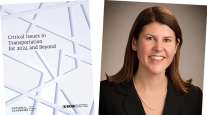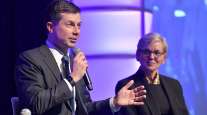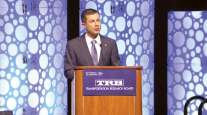Staff Reporter
Innovation in DOTs Often Starts With On-the-Ground Employees, Experts Say
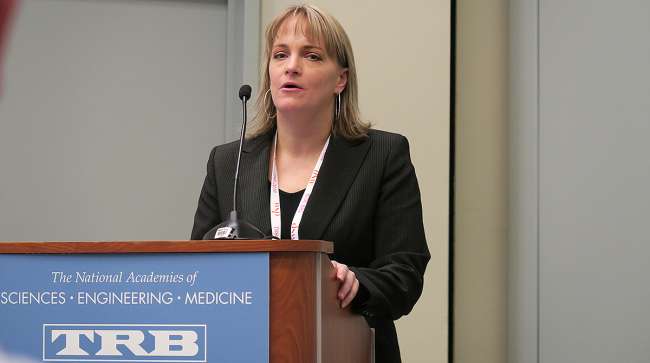
WASHINGTON— Transportation employees who work alongside roads and behind the wheels of maintenance vehicles can offer valuable perspectives on worthwhile projects, according to panelists gathered to discuss innovation at the Transportation Research Board’s annual meeting Jan. 15.
ALSO AT TRB: Leaders Unveil Critical Issues
Mindy Heinkel, a research manager within the Minnesota Department of Transportation’s Office of Maintenance, said the success of safety projects often relies on the input and experiences of front-line employees. Heinkel herself used to do field work for the agency, performing tasks such as operating heavy machinery, patching roads and repairing guardrails.
MnDOT runs initiatives, including the Maintenance Operation Research (MOR) program and the New Technology Research and Equipment Committee (NTREC), to identify and develop effective maintenance procedures. Heinkel said the agency uses a “bottom-up” approach to engage with employees for ideas.
“That is really effective,” Heinkel said. “Who better to improve the work environments than the people who are out there on the road getting their boots dirty?”
The MOR program and the NTREC fund research. The MOR program, run by the state DOT’s Office of Maintenance, funds projects less than $15,000 and NTREC covers projects that are more expensive. NTREC project awards are voted on by a statewide committee.
According to Heinkel, many successful project ideas have been brought forward by front-line employees. One example is the flaggermate, a weatherproof, durable stop sign for road crews that is outfitted with lights. Employees who are doing roadwork are more visible to motorists because of the illuminated sign, particularly during inclement weather.
Other examples include solar-powered culvert systems that address freezing pipes and LED lights attached to the wings of snowplows to increase visibility.
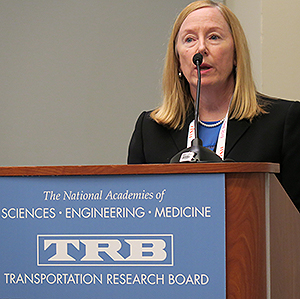
“We all have to be in this together,” says Donna Shea.
“They take a lot of pride in being creative and owning their ideas,” Heinkel said. “They like being included.”
Heinkel said MnDOT broadcasts such projects through monthly bulletins, press releases and social media posts. Such communication not only informs the public, but also encourages other people to bring forth their ideas.
One common theme among the panelists was the importance of working with other groups, such as research centers, departments of transportation, regional planning organizations and federal agencies. Donna Shea, director of Connecticut’s Local Technical Assistance Program (LTAP), said she often connects with local groups and the Connecticut DOT.
There is an LTAP in each state, seated either in a university or transportation department. The programs are funded by the Federal Highway Administration, with support from the state departments of transportation. In Connecticut, the LTAP is manifested in the Technology Transfer Center at the University of Connecticut.
“We all have to be in this together,” Shea said.
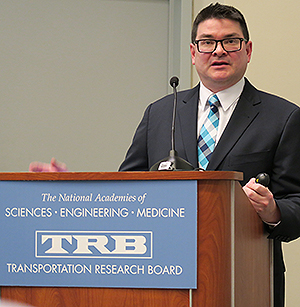
"Peers learn best from peers," says Jeffrey Zaharewicz.
In Connecticut, as in Minnesota, successful ideas with humble origins are made known to a wider public. Shea used the example of an idea from the town of Windsor that involved a solution for undercarriage washing to cleanse the underside of a vehicle that has been crusted with road salt. The washing system was included in a catalogue that shows what projects towns are using.
From the federal perspective, Jeffrey Zaharewicz, a senior adviser for the Federal Highway Administration’s Center for Accelerating Innovation, encouraged states to communicate with each other and with national agencies. The Center for Accelerating Innovation is overseen by FHWA’s Office of Innovative Program Delivery.
“We are nothing but proponents of the notion that peers learn best from peers,” Zaharewicz said. “We love to hear your stories. We love to share your stories. There’s a place and a role for that in transportation.”


